 Search by Keyword
Sign Up Below for our MONTHLY BEATLES TRIVIA QUIZ!
|
"NO REPLY"
(John Lennon - Paul McCartney)
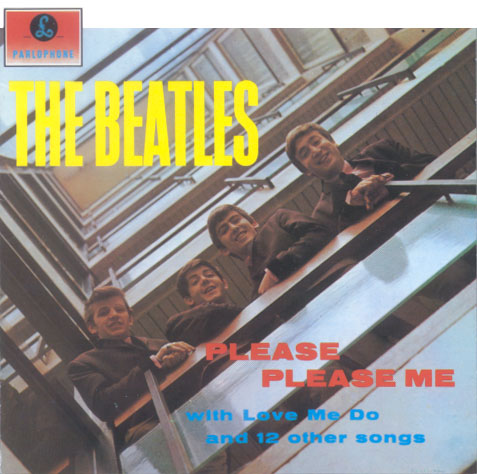 "Potboiler" is a word that was frequently used by producer George Martin to describe a song that was up-tempo, energetic and attention grabbing. His intention was to start off every Beatles album with a so-called "potboiler" to instill excitement, preferably with an original Beatles composition. He achieved this on their first British album "Please Please Me" with the rousing "I Saw Her Standing There." He hand-picked "It Won't Be Long" for their second British album "With The Beatles," which worked very well. The obvious choice for their third British album was its title track "A Hard Day's Night." "Potboiler" is a word that was frequently used by producer George Martin to describe a song that was up-tempo, energetic and attention grabbing. His intention was to start off every Beatles album with a so-called "potboiler" to instill excitement, preferably with an original Beatles composition. He achieved this on their first British album "Please Please Me" with the rousing "I Saw Her Standing There." He hand-picked "It Won't Be Long" for their second British album "With The Beatles," which worked very well. The obvious choice for their third British album was its title track "A Hard Day's Night."
 Continuing this trend on their fourth British album "Beatles For Sale" created quite a dilemma, since The Beatles were then offering mostly mid-tempo, reflective compositions. Two songs recorded during these sessions could have fit the bill, namely "I Feel Fine" and "She's A Woman," but these were chosen to grace both sides of their latest single release and wouldn't be included on the album. The energetic rockers "Kansas City" and "Rock And Roll Music" would have fit the bill, but they weren't original compositions. Continuing this trend on their fourth British album "Beatles For Sale" created quite a dilemma, since The Beatles were then offering mostly mid-tempo, reflective compositions. Two songs recorded during these sessions could have fit the bill, namely "I Feel Fine" and "She's A Woman," but these were chosen to grace both sides of their latest single release and wouldn't be included on the album. The energetic rockers "Kansas City" and "Rock And Roll Music" would have fit the bill, but they weren't original compositions.
 George Martin had no choice but to open the album with something less than energetic, his pick being "No Reply." This was a mid-tempo "story song" that depicted the singer in a negative light, having the girl he loved reject and avoid him. Capitol Records in America chose the same song to open their "Beatles '65" album. Although this wasn't considered the ideal opening number for the high-energy pop combo that had taken the world by storm throughout the previous year, did it turn out to be a bad choice? Did it hurt the future of The Beatles? Far from it! George Martin had no choice but to open the album with something less than energetic, his pick being "No Reply." This was a mid-tempo "story song" that depicted the singer in a negative light, having the girl he loved reject and avoid him. Capitol Records in America chose the same song to open their "Beatles '65" album. Although this wasn't considered the ideal opening number for the high-energy pop combo that had taken the world by storm throughout the previous year, did it turn out to be a bad choice? Did it hurt the future of The Beatles? Far from it!
Songwriting History
 John Lennon and his wife Cynthia went on a month-long vacation to Tahiti in May of 1964 with George Harrison and his new girlfriend Pattie Boyd. During this trip, John took advantage of this "down time" from his busy Beatles schedule to churn out a few new songs. "Any Time At All" and "When I Get Home" are thought to have been written during this time, and since "No Reply" was first premiered in the recording studio on June 3rd, 1964, it is quite likely that it was written during this month as well. John Lennon and his wife Cynthia went on a month-long vacation to Tahiti in May of 1964 with George Harrison and his new girlfriend Pattie Boyd. During this trip, John took advantage of this "down time" from his busy Beatles schedule to churn out a few new songs. "Any Time At All" and "When I Get Home" are thought to have been written during this time, and since "No Reply" was first premiered in the recording studio on June 3rd, 1964, it is quite likely that it was written during this month as well.
 John apparently didn't have any confidence in the song at first and offered it to a Brian Epstein managed recording artist named Tommy Quickly. It was habitual for Lennon to underestimate the quality of his songs, which sometimes resulted in his offering them to other artists. "Across The Universe" was one such example which he gave away on a whim to the World Wildlife Fund when he wasn't satisfied with the recording of the song. Had it not been for producer Jack Douglas stopping him, John's beautiful song "Woman" from his "Double Fantasy" album would have been given to Ringo for his upcoming "Stop And Smell The Roses" album. John apparently didn't have any confidence in the song at first and offered it to a Brian Epstein managed recording artist named Tommy Quickly. It was habitual for Lennon to underestimate the quality of his songs, which sometimes resulted in his offering them to other artists. "Across The Universe" was one such example which he gave away on a whim to the World Wildlife Fund when he wasn't satisfied with the recording of the song. Had it not been for producer Jack Douglas stopping him, John's beautiful song "Woman" from his "Double Fantasy" album would have been given to Ringo for his upcoming "Stop And Smell The Roses" album.
 As it was, John prepared a demo of the song in a hotel room to be given to Tommy Quickly for learning purposes. Guitarist Colin Manley, who played on Tommy Quickly's version of the song, wites in the book "Beatles Undercover" that the demo didn't have a bridge and ended with the sound of a flushing toilet (as he did with the demo he recorded of "Do You Want To Know A Secret"), which no doubt expressed John's view of the song at the time. Although Tommy Quickly did indeed record "No Reply," his version was never released. As it was, John prepared a demo of the song in a hotel room to be given to Tommy Quickly for learning purposes. Guitarist Colin Manley, who played on Tommy Quickly's version of the song, wites in the book "Beatles Undercover" that the demo didn't have a bridge and ended with the sound of a flushing toilet (as he did with the demo he recorded of "Do You Want To Know A Secret"), which no doubt expressed John's view of the song at the time. Although Tommy Quickly did indeed record "No Reply," his version was never released.
 As for this evidence of John's demo not having a bridge (or "middle eight" as they were prone to call them), this fits in nicely with Paul's recollection of himself being a contributing writer. "We wrote 'No Reply' together but from a strong original idea of his," McCartney relates. "I think he pretty much had that one, but as usual, if he didn't have the third verse and the middle eight, then he'd play it to me pretty much formed, then we would shove a bit in the middle or I'd throw in an idea." As for this evidence of John's demo not having a bridge (or "middle eight" as they were prone to call them), this fits in nicely with Paul's recollection of himself being a contributing writer. "We wrote 'No Reply' together but from a strong original idea of his," McCartney relates. "I think he pretty much had that one, but as usual, if he didn't have the third verse and the middle eight, then he'd play it to me pretty much formed, then we would shove a bit in the middle or I'd throw in an idea."
 John concurs, naming himself as the principle composer of this Beatles track. "That's my song...It was sort of my version of "Silhouettes" (by The Rays from 1957)...I had that image of walking down the street and seeing her silhouetted in the window and not answering the phone, although I never called a girl on the phone in my life! Because phones weren't part of the English child's life." John concurs, naming himself as the principle composer of this Beatles track. "That's my song...It was sort of my version of "Silhouettes" (by The Rays from 1957)...I had that image of walking down the street and seeing her silhouetted in the window and not answering the phone, although I never called a girl on the phone in my life! Because phones weren't part of the English child's life."
 As for John's opinion of the song, it obviously changed when he heard the finished version in the studio. It was even being considered for the next Beatles single, to follow up the British #1 hit "A Hard Day's Night." This changed for good as soon as "I Feel Fine" was recorded on October 18th, 1964. As for John's opinion of the song, it obviously changed when he heard the finished version in the studio. It was even being considered for the next Beatles single, to follow up the British #1 hit "A Hard Day's Night." This changed for good as soon as "I Feel Fine" was recorded on October 18th, 1964.
Recording History
 June 3rd, 1964 was the day that "No Reply" was premiered at EMI Studio Two. This day was booked to record the final track of their British "A Hard Day's Night" album, although things didn't go as planned. Ringo was hospitalized with tonsillitis and pharyngitis so this studio time was utilized to audition a recommended replacement drummer for their imminent world tour. Between 3 and 4 pm they ran through six songs with drummer Jimmy Nicol, who got the job and left to prepare for his departure with the group the next day. June 3rd, 1964 was the day that "No Reply" was premiered at EMI Studio Two. This day was booked to record the final track of their British "A Hard Day's Night" album, although things didn't go as planned. Ringo was hospitalized with tonsillitis and pharyngitis so this studio time was utilized to audition a recommended replacement drummer for their imminent world tour. Between 3 and 4 pm they ran through six songs with drummer Jimmy Nicol, who got the job and left to prepare for his departure with the group the next day.
 It was after he left that The Beatles used the remaining studio time to run through a couple new songs. George Harrison first recorded a demo of his second composition "You Know What To Do," which never saw the light of day during The Beatles career, although this demo recording was finally released on "Anthology 1." It was after he left that The Beatles used the remaining studio time to run through a couple new songs. George Harrison first recorded a demo of his second composition "You Know What To Do," which never saw the light of day during The Beatles career, although this demo recording was finally released on "Anthology 1."
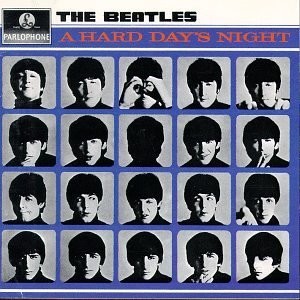 Secondly, the group performed a rough run-through of the newly written "No Reply" on guitar, bass and drums (also available on "Anthology 1"). Since neither Ringo nor Jimmy Nicol was present, there is question about the identity of the drummer on this track. Since the drum-work is quite perfunctory, it could be Paul on drums with George Harrison on bass, or vice versa. Either way, it was obvious that they couldn't complete the song for commercial release without Ringo, so it was shelved for almost four months. It could be speculated that, had Ringo been there, "No Reply" could have become the fourteenth track on the British "A Hard Day's Night" album, since it was one song short. Of course, this is just speculation. Secondly, the group performed a rough run-through of the newly written "No Reply" on guitar, bass and drums (also available on "Anthology 1"). Since neither Ringo nor Jimmy Nicol was present, there is question about the identity of the drummer on this track. Since the drum-work is quite perfunctory, it could be Paul on drums with George Harrison on bass, or vice versa. Either way, it was obvious that they couldn't complete the song for commercial release without Ringo, so it was shelved for almost four months. It could be speculated that, had Ringo been there, "No Reply" could have become the fourteenth track on the British "A Hard Day's Night" album, since it was one song short. Of course, this is just speculation.
 It should also be noted that the bridge of the song was heard on this first take, so McCartney must have met with John to finish it before this time. Lyrically it appears to be finished at this point too, although they were poking fun at the words "your face," inserting them at the ends of lines where they weren't meant to be. It should also be noted that the bridge of the song was heard on this first take, so McCartney must have met with John to finish it before this time. Lyrically it appears to be finished at this point too, although they were poking fun at the words "your face," inserting them at the ends of lines where they weren't meant to be.
 September 30th, 1964 was the date the group set about properly recording the song, this time with Ringo behind the drum kit. Afternoon and evening sessions were booked for this day, the first session set aside for finishing the song "Every Little Thing." The evening session ran from 6:30 to 10:30 pm with the first order of business being taking another stab at recording "What You're Doing," although this wasn't deemed suitable for release and they re-made the song on another day. September 30th, 1964 was the date the group set about properly recording the song, this time with Ringo behind the drum kit. Afternoon and evening sessions were booked for this day, the first session set aside for finishing the song "Every Little Thing." The evening session ran from 6:30 to 10:30 pm with the first order of business being taking another stab at recording "What You're Doing," although this wasn't deemed suitable for release and they re-made the song on another day.
 At approximately 8:30 pm, the group spent the rest of the two hour session beginning and finishing "No Reply." They recorded all the instruments, including George Martin on piano, live on each take along with John and Paul's vocals. They realized that the bridge was a powerful focal point in the song, so they attempted to repeat the bridge and final verse on "take five," which extended the song from 2:14 to 3:17. After deciding that this was a little much, they went back to ending the song after the third verse. Both John and Paul overdubbed their vocals onto "take eight," which was deemed the best. At approximately 8:30 pm, the group spent the rest of the two hour session beginning and finishing "No Reply." They recorded all the instruments, including George Martin on piano, live on each take along with John and Paul's vocals. They realized that the bridge was a powerful focal point in the song, so they attempted to repeat the bridge and final verse on "take five," which extended the song from 2:14 to 3:17. After deciding that this was a little much, they went back to ending the song after the third verse. Both John and Paul overdubbed their vocals onto "take eight," which was deemed the best.
 Two mono mixes were made on October 16th, 1964 in the control room of EMI Studio One, one of which was chosen for release. This mix was made by George Martin and engineers Norman Smith and A.B. Lincoln. A discernable cough is heard quite prominently after the word "window" in the first verse on this mix. Also, they worked to clean up John's double-tracking on the phrase "in my place" in the third verse, the mono mix only double-tracking the word "place," which is different from the stereo mix. A good amount of reverb was added to John's vocals at this stage, as was a somewhat abrupt fade-out of the final chord. Two mono mixes were made on October 16th, 1964 in the control room of EMI Studio One, one of which was chosen for release. This mix was made by George Martin and engineers Norman Smith and A.B. Lincoln. A discernable cough is heard quite prominently after the word "window" in the first verse on this mix. Also, they worked to clean up John's double-tracking on the phrase "in my place" in the third verse, the mono mix only double-tracking the word "place," which is different from the stereo mix. A good amount of reverb was added to John's vocals at this stage, as was a somewhat abrupt fade-out of the final chord.
 The stereo mix was performed by George Martin and Norman Smith with 2nd engineer Mike Stone on November 4th, 1964 in the control room of EMI Studio Two. This rushed mixing session resulted in ten of the recently recorded tracks being mixed for stereo, "No Reply" being the eighth completed. The double-tracking that is heard at the end of the third verse comprises both of the words "my place" this time around and the fade-out of the final chord sounds much more realistic. Similar reverb was added to the vocals here as well. The stereo mix was performed by George Martin and Norman Smith with 2nd engineer Mike Stone on November 4th, 1964 in the control room of EMI Studio Two. This rushed mixing session resulted in ten of the recently recorded tracks being mixed for stereo, "No Reply" being the eighth completed. The double-tracking that is heard at the end of the third verse comprises both of the words "my place" this time around and the fade-out of the final chord sounds much more realistic. Similar reverb was added to the vocals here as well.
Song Structure and Style
 This song follows the simple and familiar pattern established early on in The Beatles cannon, which consists of 'verse/ verse/ bridge/ verse' (or aaba) as heard, for instance, in "Please Please Me." While this may be noteworthy, the comparisons stop there, as "No Reply" is far more emotionally charged and dramatic than anything they had released up to this point. While no solo or instrumental section was needed, a brief conclusion rounded out the arrangement. This song follows the simple and familiar pattern established early on in The Beatles cannon, which consists of 'verse/ verse/ bridge/ verse' (or aaba) as heard, for instance, in "Please Please Me." While this may be noteworthy, the comparisons stop there, as "No Reply" is far more emotionally charged and dramatic than anything they had released up to this point. While no solo or instrumental section was needed, a brief conclusion rounded out the arrangement.
 The first verse begins with John's vocals appearing before the first downbeat of the first measure, which is something they apparently quite enjoyed doing (witness "It Won't Be Long," "All My Loving" and "Can't Buy Me Love" as examples). This sixteen measure verse, as with all three of the verses, can be broken down into four sections. The first, second and fourth sections are relatively identical, with subdued solo vocals from John that set the stage for the details of his story. The first verse begins with John's vocals appearing before the first downbeat of the first measure, which is something they apparently quite enjoyed doing (witness "It Won't Be Long," "All My Loving" and "Can't Buy Me Love" as examples). This sixteen measure verse, as with all three of the verses, can be broken down into four sections. The first, second and fourth sections are relatively identical, with subdued solo vocals from John that set the stage for the details of his story.
 The third section, however, is the focal point of dramatic tension in the entire song, which highlights the stunning detail that hits the singer (and us in effect) in the gut. The highlighted phrase "I saw the light" is repeated twice in this section to underscore the shocking evidence of being lied to about his girl not being at home. Violent syncopations with cymbal crashes on each eighth note before the downbeat, along with screaming harmonies from John and Paul, demand our attention to this significant detail. The third section, however, is the focal point of dramatic tension in the entire song, which highlights the stunning detail that hits the singer (and us in effect) in the gut. The highlighted phrase "I saw the light" is repeated twice in this section to underscore the shocking evidence of being lied to about his girl not being at home. Violent syncopations with cymbal crashes on each eighth note before the downbeat, along with screaming harmonies from John and Paul, demand our attention to this significant detail.
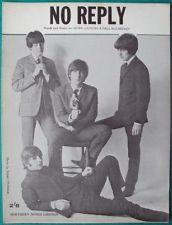 The second verse follows the same pattern as more details of the betrayal unfold. The highlighted phrase in the second verse is "I nearly died," which allows us to sympathize with the heartbreak John is going through. The second verse follows the same pattern as more details of the betrayal unfold. The highlighted phrase in the second verse is "I nearly died," which allows us to sympathize with the heartbreak John is going through.
Drama unfolds quite well in the sixteen measure bridge, which is used as a vocal plea for his girl to repent and come clean, no questions asked. Staccato piano stabs and handclaps appear to accentuate the high register harmony vocals from John and Paul, which are used quite well to contrast the bridge from the rest of the song.
 Since the title of the song is heard at the end of the bridge, a repeat of the second verse is heard instead of the usual repeat of the first (as evidenced in "Please Please Me"). After this relatively identical performance of the second verse, a four measure conclusion rounds off the song. It was no accident that they chose the dramatic third section of the verse to modify for a conclusion, since they (or George Martin) recognized its flagrant prominence in the song. The highlighted phrase now becomes "no reply" and we end on a C chord with an added sixth and added ninth, which works to complete the sad story with a resounding sigh! Since the title of the song is heard at the end of the bridge, a repeat of the second verse is heard instead of the usual repeat of the first (as evidenced in "Please Please Me"). After this relatively identical performance of the second verse, a four measure conclusion rounds off the song. It was no accident that they chose the dramatic third section of the verse to modify for a conclusion, since they (or George Martin) recognized its flagrant prominence in the song. The highlighted phrase now becomes "no reply" and we end on a C chord with an added sixth and added ninth, which works to complete the sad story with a resounding sigh!
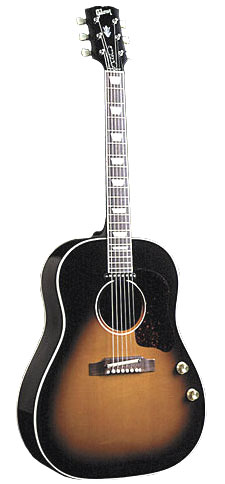 John's performance is truly the highlight, with his gruff vocals (no doubt due to the long hours in the recording studio that day) and singer-songwriter style acoustic guitar work. His subdued sore throat adds a convincing depth to the story, unlike the inappropriate upbeat performance heard on "take one" on June 3rd, 1964. Paul is next to be commended for his higher harmonies that only appear during dramatic points in the song (unlike throughout the song as heard on "take one"). In fact, his higher harmonies in the verses ("I saw the light" and "I nearly died") were originally intended as the melody which was to be sung by John as evidenced on "take one." Since Lennon's voice was shot by this time, he sang the lower harmony which is now viewed as the melody. John's performance is truly the highlight, with his gruff vocals (no doubt due to the long hours in the recording studio that day) and singer-songwriter style acoustic guitar work. His subdued sore throat adds a convincing depth to the story, unlike the inappropriate upbeat performance heard on "take one" on June 3rd, 1964. Paul is next to be commended for his higher harmonies that only appear during dramatic points in the song (unlike throughout the song as heard on "take one"). In fact, his higher harmonies in the verses ("I saw the light" and "I nearly died") were originally intended as the melody which was to be sung by John as evidenced on "take one." Since Lennon's voice was shot by this time, he sang the lower harmony which is now viewed as the melody.
 Paul's bass work is also relatively without flourishes and low in the mix, which doesn't detract from the song's message; the most important component of this song. Paul's bass work is also relatively without flourishes and low in the mix, which doesn't detract from the song's message; the most important component of this song.
Since no solo was required, George Harrison is reduced to acoustic rhythm guitar throughout, sometimes adding a sixth or ninth for special effect. In the first eight measures of each verse Ringo taps out a bossa nova beat, which has never graced a Beatles song before. His syncopated accents and cymbal crashes come in dependably whenever needed to create a tight musical performance within the band. It took some practice before getting it right (evidenced by "take two" as contained on "Anthology 1"), and he almost got it perfect. He does put in one extra crash just before the conclusion, but George Martin decided just to leave it in instead of taking the time to edit it out.
The Beatles music publisher Dick James thought quite a lot of "No Reply." John Lennon relates, "I remember Dick James coming up to me after we did this one and saying, 'You're getting better now-That was a complete story.' Apparently, before that, he thought my songs wandered off."
 John Lennon truly had grown as a songwriter by this point. The vagueness of romantic clichés had given way to details and resolves, possibly due to his recent fixation on the music of Bob Dylan. This song tells of him going more than one time ("this happened once before") to his girlfriend's house to be told by her parents (or flatmates?) that she wasn't there. He knew better because he "saw the light" through the window as she 'peeped through' and actually saw "her face." John Lennon truly had grown as a songwriter by this point. The vagueness of romantic clichés had given way to details and resolves, possibly due to his recent fixation on the music of Bob Dylan. This song tells of him going more than one time ("this happened once before") to his girlfriend's house to be told by her parents (or flatmates?) that she wasn't there. He knew better because he "saw the light" through the window as she 'peeped through' and actually saw "her face."
When he tries contacting her on the phone, the call is intercepted to tell him that she's not home, but John knows "that's a lie" because he's been watching the house and saw her come home. He "nearly died" when he saw her coming home holding hands "with another man in my place."
 He then realizes he's been replaced, but fails to give up. His final plea is to proclaim that he loves her "more than any other guy." If she will come back to him, he'll "forgive the lies" and continue where they left off. We don't know lyrically if she comes back, but the finality of the final chord suggests the anguish of a lost love, which indicates "a complete story" as Dick James proclaimed. He then realizes he's been replaced, but fails to give up. His final plea is to proclaim that he loves her "more than any other guy." If she will come back to him, he'll "forgive the lies" and continue where they left off. We don't know lyrically if she comes back, but the finality of the final chord suggests the anguish of a lost love, which indicates "a complete story" as Dick James proclaimed.
American Releases
 December 15th, 1964 was the date of the first release of "No Reply" as the lead-off track of the Capitol album "Beatles '65." America was no doubt taken by surprise by this downbeat piece of romantic fiction with a powerful melody opening up their latest offering. Surprised but accepted, as the album soared to #1 on the American Billboard album chart for nine straight weeks. This LP then appeared as an individual compact disc on January 21st, 2014, both the mono and stereo versions of the album contained on a single CD. December 15th, 1964 was the date of the first release of "No Reply" as the lead-off track of the Capitol album "Beatles '65." America was no doubt taken by surprise by this downbeat piece of romantic fiction with a powerful melody opening up their latest offering. Surprised but accepted, as the album soared to #1 on the American Billboard album chart for nine straight weeks. This LP then appeared as an individual compact disc on January 21st, 2014, both the mono and stereo versions of the album contained on a single CD.
 Sometime in 1967, Capitol released Beatles music on a brand new but short-lived format called "Playtapes." These tape cartridges did not have the capability to include entire albums, so two truncated four-song versions of "Beatles '65" were released in this portable format, "No Reply" being on one of these. These "Playtapes" are highly collectable today. Sometime in 1967, Capitol released Beatles music on a brand new but short-lived format called "Playtapes." These tape cartridges did not have the capability to include entire albums, so two truncated four-song versions of "Beatles '65" were released in this portable format, "No Reply" being on one of these. These "Playtapes" are highly collectable today.
 The first time the original British "Beatles For Sale" album was made available in the US was the "Original Master Recording" vinyl edition released through Mobile Fidelity Sound Lab in February of 1987. This album included "No Reply" and was prepared utilizing half-speed mastering technology from the original master tape on loan from EMI. This version of the album was only available for a short time and is quite collectible today. The first time the original British "Beatles For Sale" album was made available in the US was the "Original Master Recording" vinyl edition released through Mobile Fidelity Sound Lab in February of 1987. This album included "No Reply" and was prepared utilizing half-speed mastering technology from the original master tape on loan from EMI. This version of the album was only available for a short time and is quite collectible today.
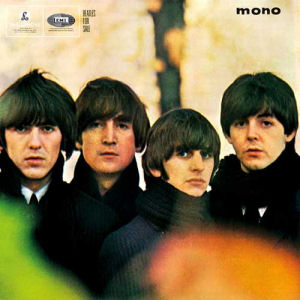 The original "Beatles For Sale" album that contained the song in Britain was released in the US on compact disc on February 26th, 1987 and on vinyl on July 21st, 1987. While this initial release was in mono only, the stereo remastered version debuted in America on compact disc on September 9th, 2009 and on vinyl on November 13th, 2012. The original "Beatles For Sale" album that contained the song in Britain was released in the US on compact disc on February 26th, 1987 and on vinyl on July 21st, 1987. While this initial release was in mono only, the stereo remastered version debuted in America on compact disc on September 9th, 2009 and on vinyl on November 13th, 2012.
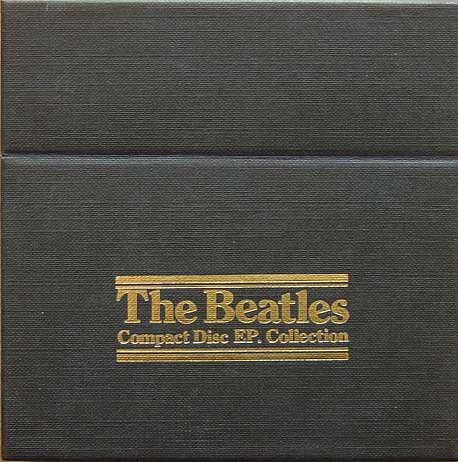 Another mono release in the US was on June 30th, 1992. The box set "Compact Disc EP Collection" came out on this date, "No Reply" being included therein because of it appearing on the EP entitled "Beatles For Sale," which was originally released on vinyl in Britain on April 6th, 1965. Another mono release in the US was on June 30th, 1992. The box set "Compact Disc EP Collection" came out on this date, "No Reply" being included therein because of it appearing on the EP entitled "Beatles For Sale," which was originally released on vinyl in Britain on April 6th, 1965.
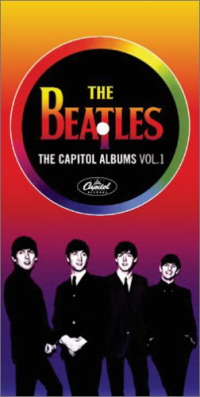 November 16th, 2004 saw the release of the box set "The Capitol Albums, Vol. 1," which contained the original "Beatles '65" album on CD with both the stereo and mono mixes as released in 1964. Since the remastered "Beatles For Sale" LP hadn't yet been released, this box set temporarily satisfied US fans who missed hearing these songs in stereo as they had growing up in the 60's. November 16th, 2004 saw the release of the box set "The Capitol Albums, Vol. 1," which contained the original "Beatles '65" album on CD with both the stereo and mono mixes as released in 1964. Since the remastered "Beatles For Sale" LP hadn't yet been released, this box set temporarily satisfied US fans who missed hearing these songs in stereo as they had growing up in the 60's.
The original mono mix was then remastered and included in the box set "The Beatles In Mono," which was released on CD on September 9th, 2009 and on vinyl on September 9th, 2014.
Live Performances
Despite such high hopes for the song after it was recorded, even considering it for their next single, The Beatles never touched it again after September 30th, 1964. With all attention focused on "I Feel Fine," which became their new single, they didn't even think to perform it for BBC radio.
Conclusion
 Songs about being ill-treated by a lover were not new for John Lennon, as we've seen this re-occurring theme as far back as their first album. What is unique with "No Reply," though, is how the melody line, chord pattern, vocal delivery and musical arrangement convincingly depict the subject as never before. It's not delivered with a country twang, such as on "I'll Cry Instead." It's not portrayed with lyrical vagueness, such as on "I Call Your Name." And it isn't packaged in a happy, sing-a-long manner, such as on "Misery." Songs about being ill-treated by a lover were not new for John Lennon, as we've seen this re-occurring theme as far back as their first album. What is unique with "No Reply," though, is how the melody line, chord pattern, vocal delivery and musical arrangement convincingly depict the subject as never before. It's not delivered with a country twang, such as on "I'll Cry Instead." It's not portrayed with lyrical vagueness, such as on "I Call Your Name." And it isn't packaged in a happy, sing-a-long manner, such as on "Misery."
 "No Reply" shows Lennon genuinely pained. While he usually opted to write about teenage romanticism in his earlier work, which was the common fare for pop music at that time, he now appears to be no longer afraid to display genuine emotions in his songwriting. In fact, he could truly be said to be paving the way within The Beatles in this category, McCartney only shyly touching on real-life feelings on tracks such as "Things We Said Today." And although Paul dug somewhat deeper emotionally in his songwriting in later years (such as with "I'm Looking Through You" and "Let It Be"), these are lightweight as compared to the gut-wrenching songs John delivered throughout the rest of the Beatle years and beyond. "No Reply" shows Lennon genuinely pained. While he usually opted to write about teenage romanticism in his earlier work, which was the common fare for pop music at that time, he now appears to be no longer afraid to display genuine emotions in his songwriting. In fact, he could truly be said to be paving the way within The Beatles in this category, McCartney only shyly touching on real-life feelings on tracks such as "Things We Said Today." And although Paul dug somewhat deeper emotionally in his songwriting in later years (such as with "I'm Looking Through You" and "Let It Be"), these are lightweight as compared to the gut-wrenching songs John delivered throughout the rest of the Beatle years and beyond.
Song Summary
"No Reply"
Written by: John Lennon / Paul McCartney
-
Song Written: May 1964
- Song Recorded: September 30, 1964
- First US Release Date: December 15, 1964
- First US Album Release: Capitol #ST-2228 "Beatles '65"
- US Single Release: n/a
- Highest Chart Position: n/a
- British Album Release: Parlophone #PCS 3062 "Beatles For Sale"
- Length: 2:15
- Key: C major
- Producer: George Martin
- Engineers: Norman Smith, Ken Scott, Mike Stone
Instrumentation (most likely):
- John Lennon - Lead Vocals, Rhythm Guitar (1964 Gibson J160E), handclaps
- Paul McCartney - Bass Guitar (1963 Hofner 500/1), Harmony Vocals, handclaps
- George Harrison - Rhythm Guitar (1962 Gibson J160E), handclaps
- Ringo Starr - Drums (1964 Ludwig Super Classic Black Oyster Pearl), handclaps
- George Martin - Piano (1905 Steinway Vertegrand upright)
Written and compiled by Dave Rybaczewski
|
IF YOU WOULD LIKE TO MAKE A DONATION TO KEEP THIS WEBSITE UP AND RUNNING, PLEASE CLICK BELOW!
|